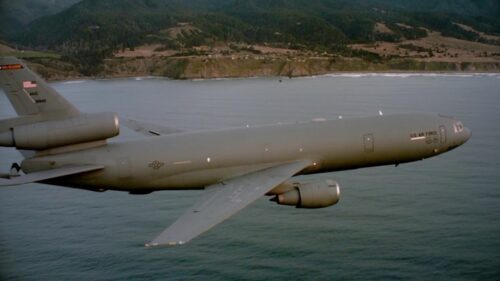
Most people know the tragic story of the McDonnell Douglas DC-10, a unmistakable flying disaster. In its early years it killed many hundreds of people.
However, I suspect very few know the flip side of that story, where military rigor and strict maintenance rotated the DC-10 disasters into the KC-10 with decades of reliable success.
The KC-10 Extender has been a stalwart workhorse in the United States Air Force’s fleet for decades. […] “In the 1 1/2 years that the KC-10 has been at [Prince Sultan Air Base], they’ve accomplished over 1,300 missions with over 9,000 flying hours, and delivered nearly 73 million pounds of fuel to over 11,000 receivers,” said [Saudi Arabia, Brig. Gen. Akshai Gandhi, 378th Air Expeditionary Wing commander]
The USAF makes it fairly clear how their KC-10 program differed in approach (pun not intended) from for-profit commercial airlines and ruthless manufacturers trying to squeeze quality.
At the forefront of keeping the aging KC-10 in the air, are the hardworking maintainers who have ensured maximum operability of the aircraft. Despite the hot and sandy conditions the AFCENT AOR is known for, and the limited availability of parts for the aging aircraft, Airmen of the 378th Aircraft Maintenance Squadron (AMXS) have ensured the KC-10’s last deployment was just as effective as its first.
“To prepare a KC-10 for flight, we typically invest about 3 hours,” said Tech. Sgt. Nikolie Ambriz, 378th AMXS maintainer. “This time is primarily allocated to performing avionics operation checks and conducting thorough visual inspections enabling us to identify potential issues before aircrew arrive at the aircraft.”
Taxpayer dollars at work. It’s almost like a government run version of the DC-10 dramatically increased its survivability versus the market-driven one.
[Despite shareholder profits expected from] its quick design process, the DC-10 is more known for the variety of incidents it was involved in, with 32 hull loss incidents and over 1,200 passenger fatalities.
Even more to the point, and with a nod to Boeing’s recent 737 MAX disasters…
…seeking greater efficiency, American Airlines, Continental Airlines and United Airlines had developed alternate procedures that saved approximately 200 man-hours per aircraft. […] This repositioning caused unseen structural damage to be done to the wing’s pylon attachment points. Then, like a ticking time bomb, tail number N110AA continued to fly an additional eight weeks, with the damage increasing with every takeoff and landing.
The USAF quietly says their KC-10 variant has become a legend, as they sunset it, and they are right in more ways than one.